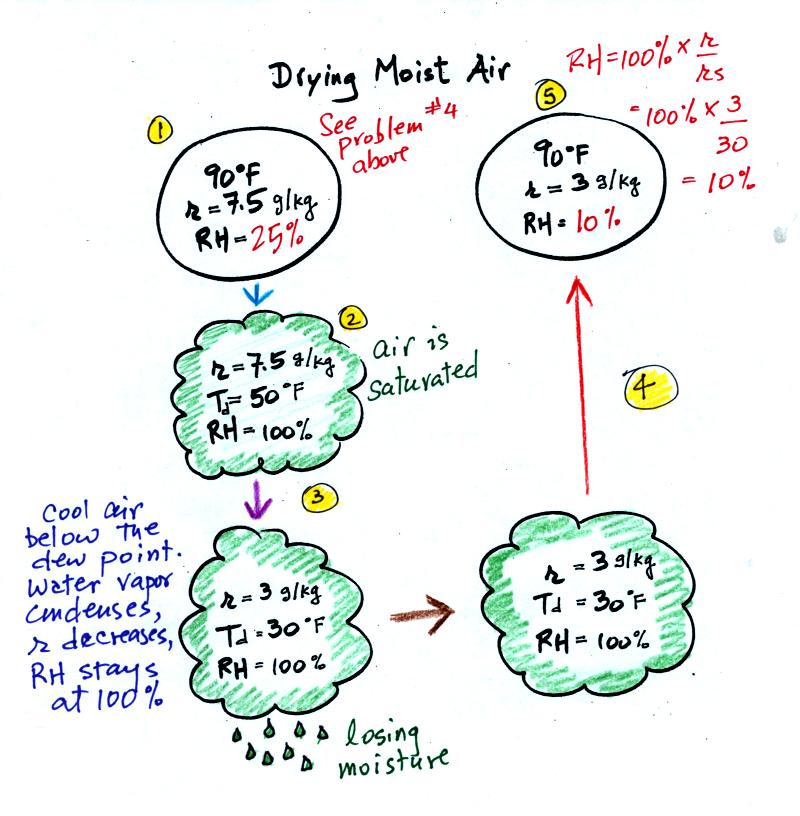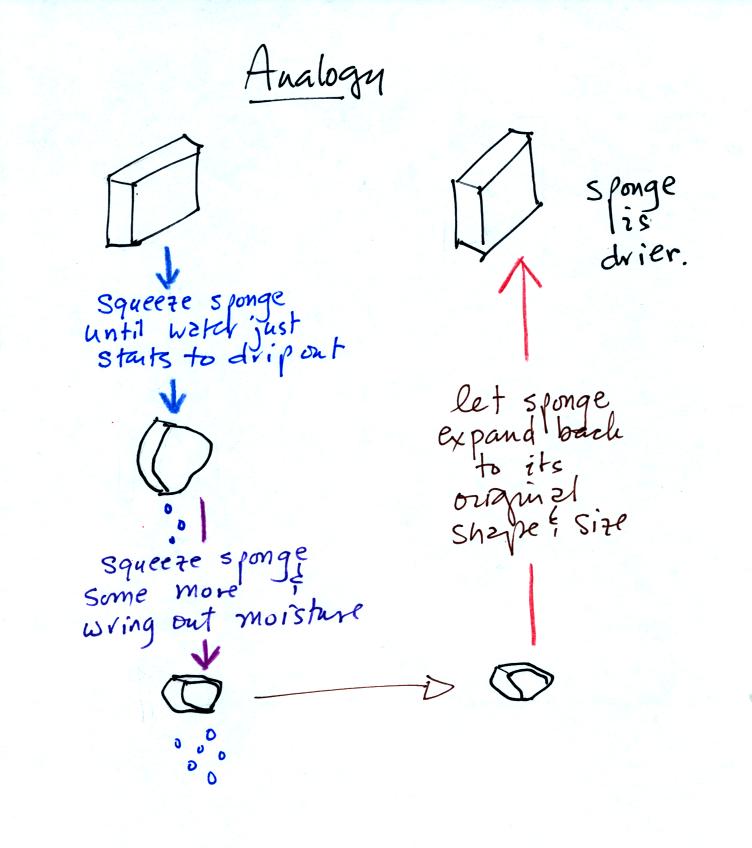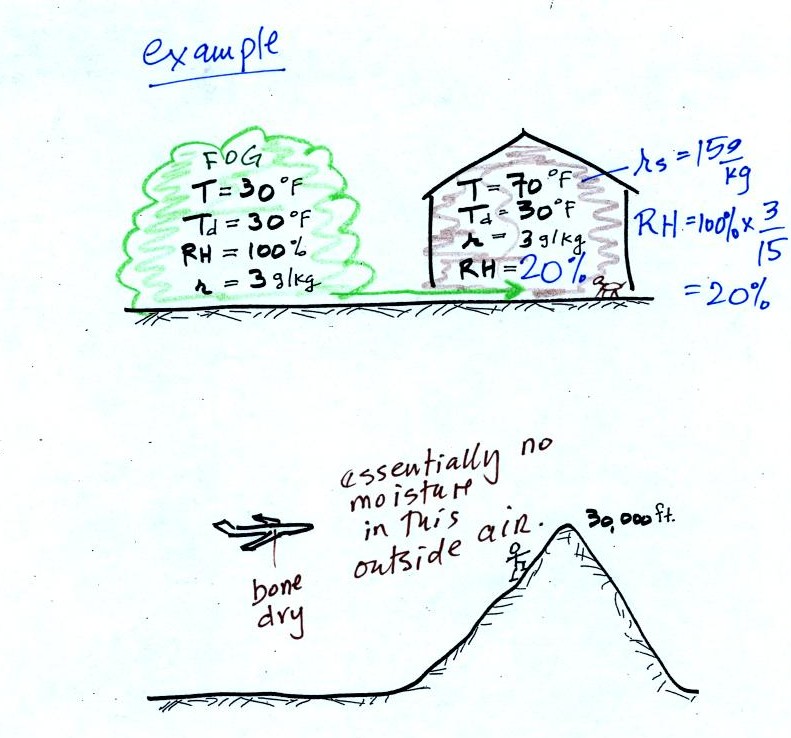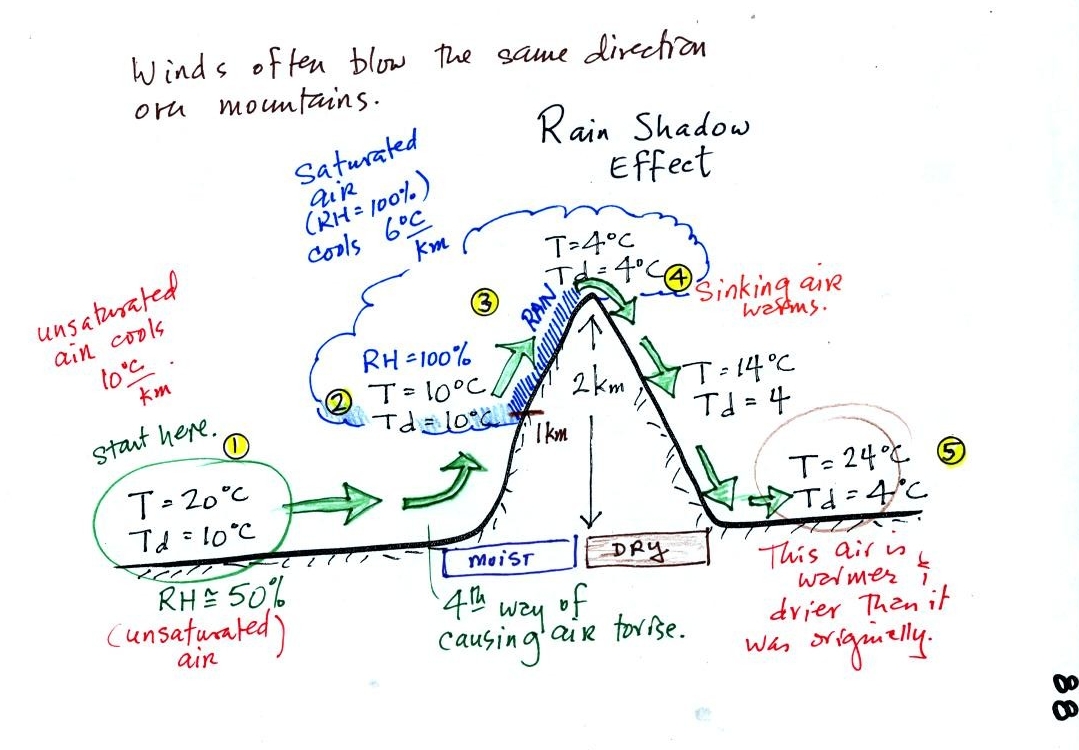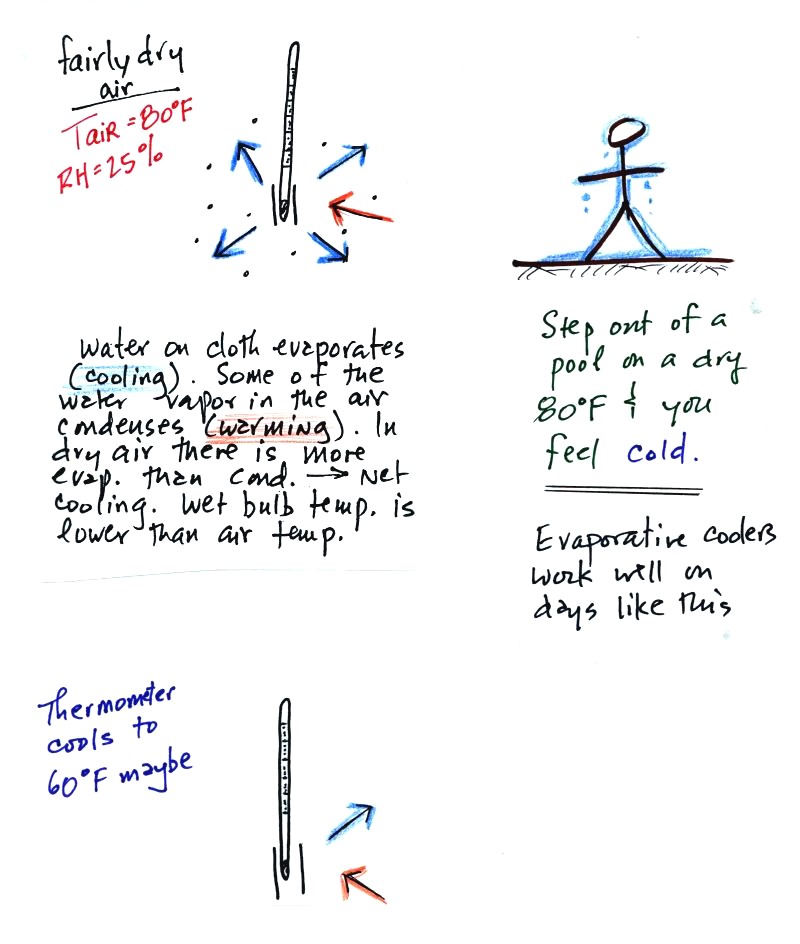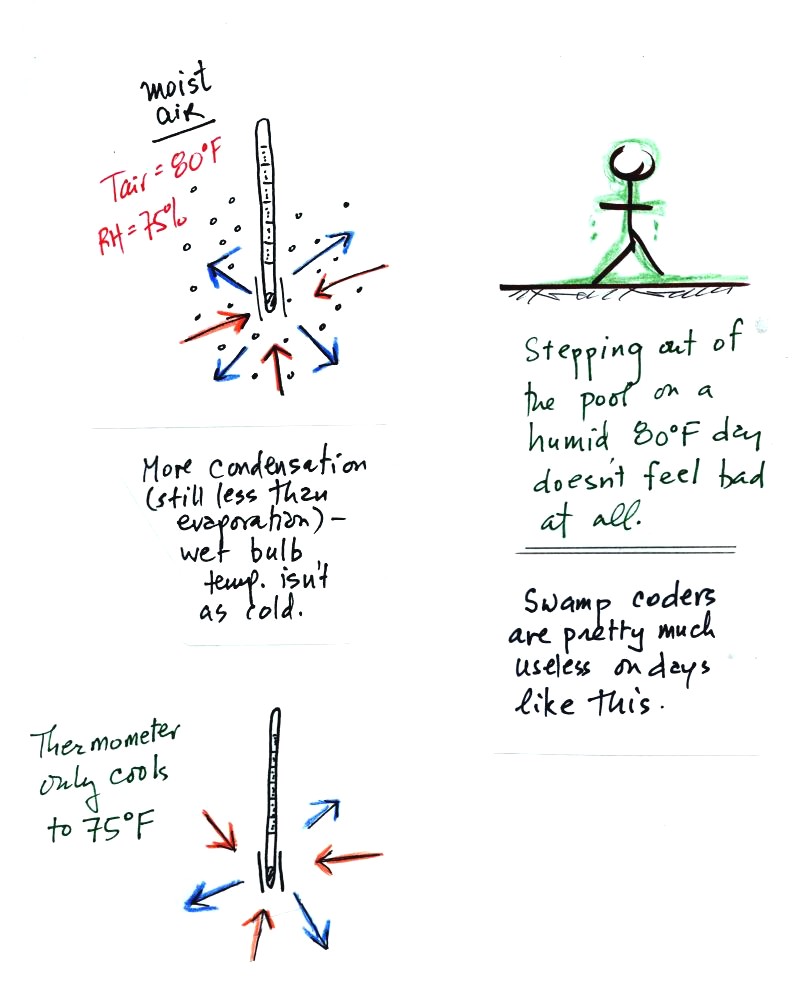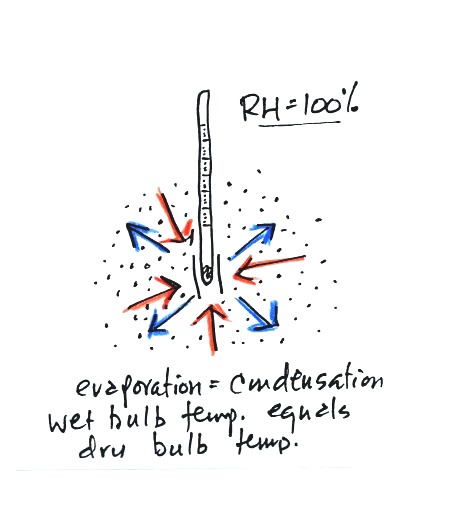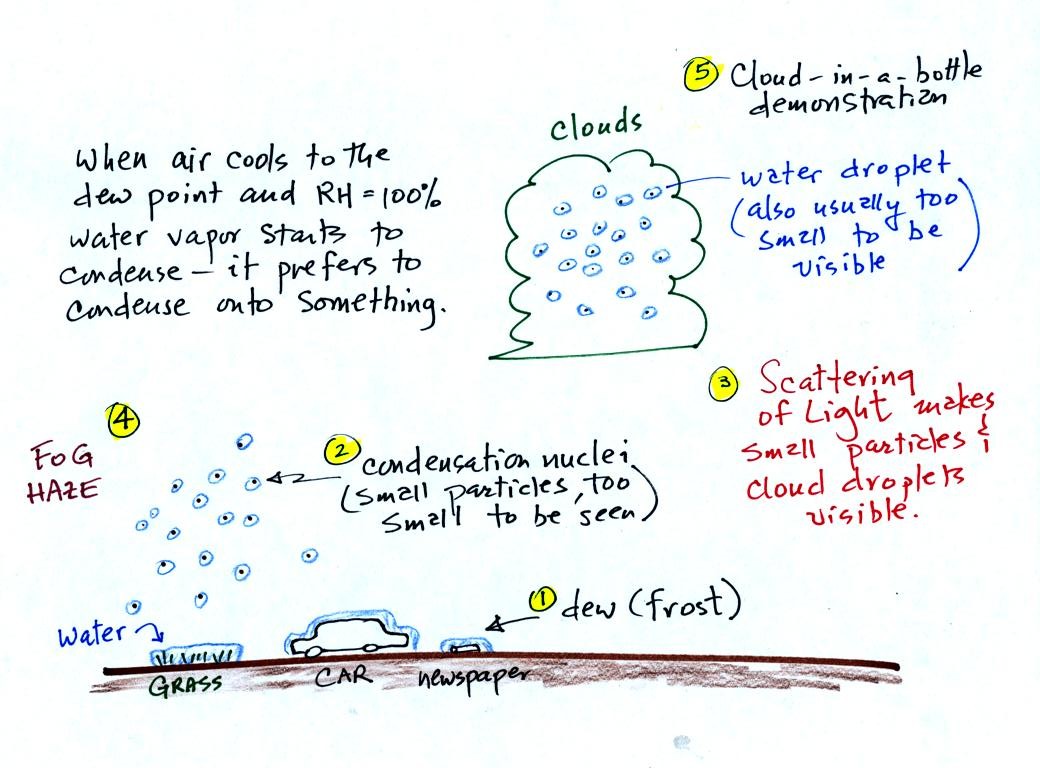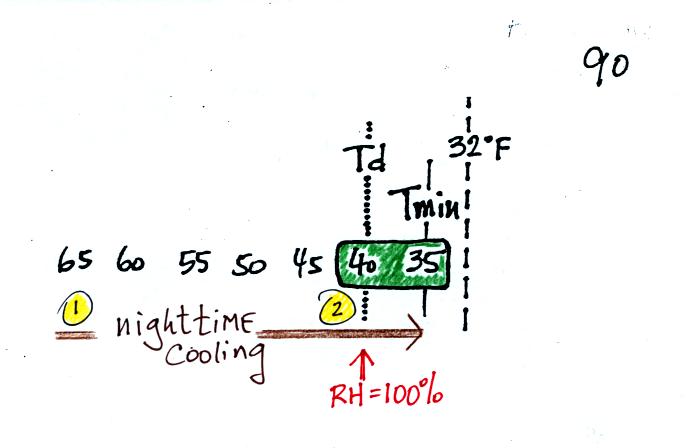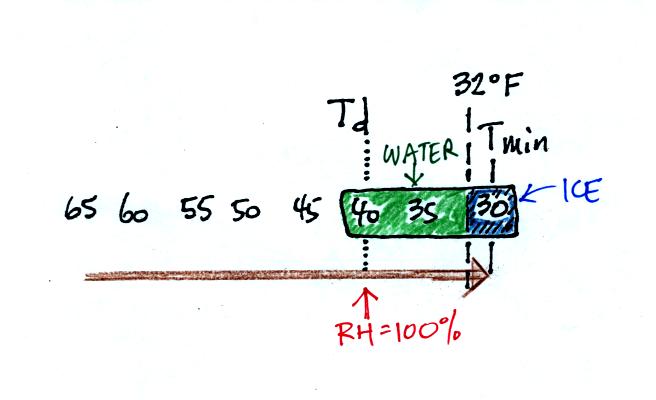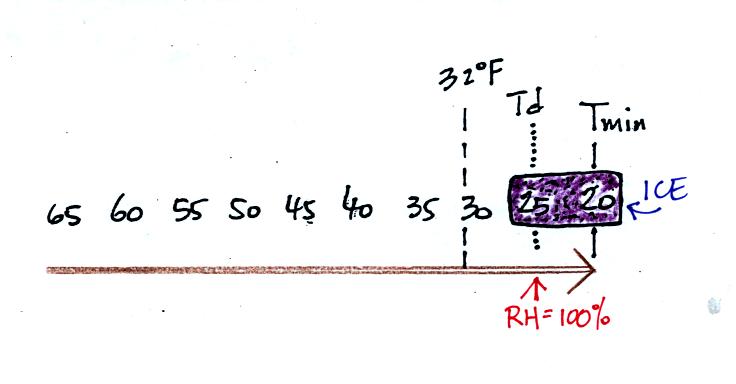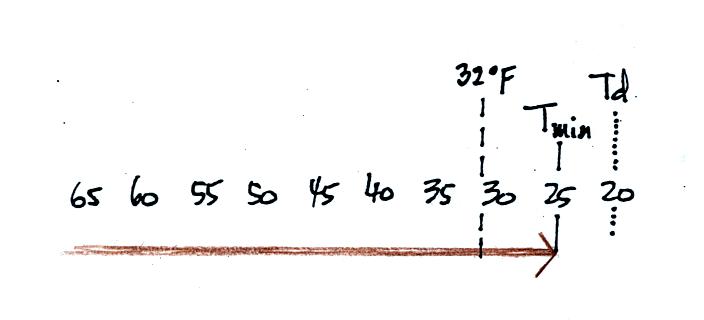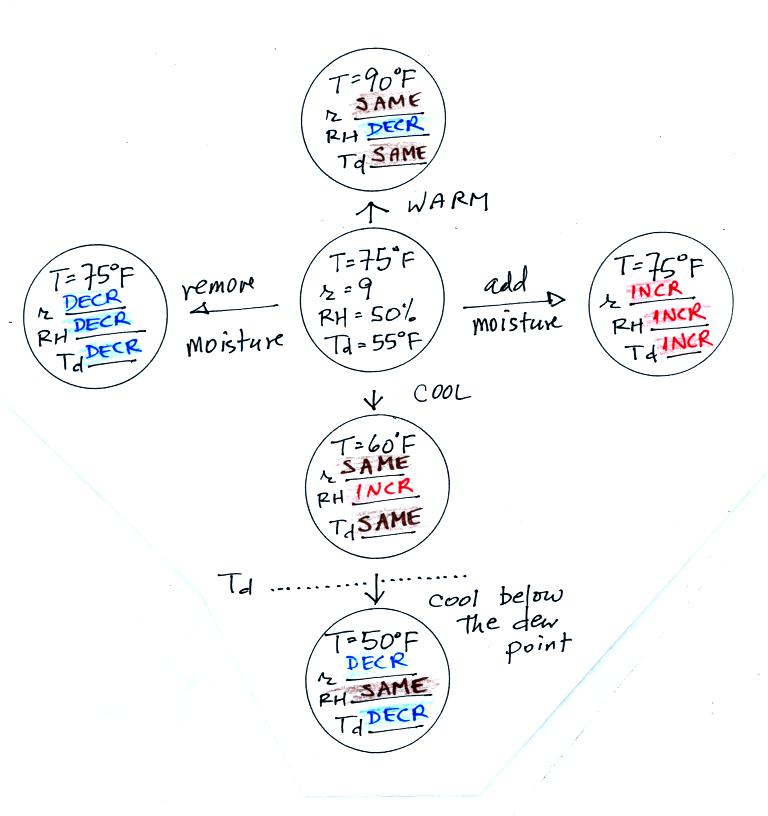
The air is rising and cooling along
Path a. The relative humidity would be increasing along A
eventually becoming 100% about halfway up the side of the mountain (the
cloud base indicates where RH became 100%)
Air is being cooled below the dew point temperature along Path b and
moisture is being "wrung" from the air (water vapor is
condensing). Because water vapor is being removed from the air,
the mixing ratio will decrease along Path b.
The air is sinking and warming along Path c. The relative
humidity will decrease along Path c.
Water vapor is not being added at any point in the picture, thus mixing
ratio doesn't increase anywhere.
